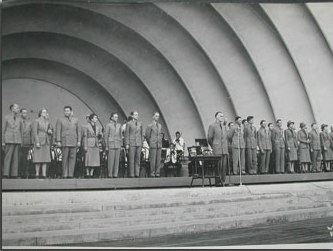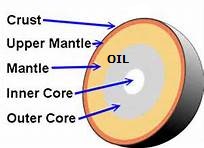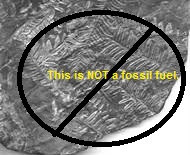Technocracy:
1.) An advanced industrial society of continental extent in which the
supporting economy uses energy units for measurement and control, in place of
the monetary values (money) of the Price System
2.) A membership society or movement, originating in North America in 1934, advocating adoption of this concept.
3.) A subverted use of the term, in wide use, specifying management or rule by specialized experts rather than by elected representatives or non-specialists.
A paper on Technocracy
by Walter Fryers.

WHO’S WHO OF TECHNOCRACY
SCOTT?, VEBLEN?, HUBBERT?
INTRODUCTION
The long continued silence of academia and the mainline press in America on the subject of Technocracy has resulted in almost universal distortion of the original meaning of the word and also the omission of proper recognition of Howard Scott as the author of the concepts of Technocracy. This paper attempts to correct this situation.
There are innumerable instances of these misrepresentations. Here are three examples.
Example 1: 1932.
Attempts to link Thorstein Veblen with Technocracy began almost immediately after the public discovery of Howard Scott and Technocracy in 1932. In 1933 an article in Living Age by one Leon Ardzrooni is a good example. The title was “Veblen and Technocracy”. To make his case Ardzrooni does not hesitate to twist the facts and invent the relationship. He writes: “To further enhance its prestige, Technocracy has been surrounded with the halo of the great name of Thorstein Veblen. What has lent color to such an authentication has been the second printing of Veblen’s ‘The Engineers and the Price System’, which the critics have hailed as ‘the original gospel from which the theories of Technocracy have been developed’. (Emphasis mine.) So in this manner the lie of Veblen’s connection with Technocracy has been perpetuated.
Example 2: 1951
Scott reported in a recorded talk to members in Detroit in 1951: “William Randolph Hearst… one of the worst of all Americans… I have the original telegram, signed in his handwriting, which was sent out to every Hearst official that the name “Technocracy” was not to be used under any condition whatsoever. They were subject to dismissal and severance from the Hearst organization if they did so.”
The Hearst publishing empire in Los Angeles was probably the dominant one in California, if not in America, at that time (1936?), and could be an influence on other media even to this day. It may be the most effective blackout of Scott and Technocracy of the many that followed.
Example 3: 2008
“Hubbert; King of the Technocrats” proclaims the heading for a recent (13 Dec 2008) posting on the widely read web site –‘The Oil Drum’. In this case it was initially on the Australia and New Zealand edition and repeated later in an American edition. The author was a well-known UK sportsman signed on as ‘Big Gus’. His attempt to briefly present both Hubbert and Technocracy is severely distorted. His listing of Hubbert as the primary author of the Technocracy Study Course is sheer fabrication, which he probably derived from other sources.
These examples of the distortion of Scott’s Technocracy are three of many. In fact a review of dictionaries in Edmonton libraries found none to be on subject. To help correct the record we review the origins of Technocracy.
Three names are commonly associated with the word ‘Technocracy’ and its origins: Howard Scott, Thorstein Veblen and M. King Hubbert. Just how significant is the connection in each case?
HOWARD SCOTT’S ‘TECHNOCRACY’
Here in his own words Howard Scott describes the origination of the technocracy concepts:
“.. …about the origins of the body of thought that is encompassed in the term ‘technocracy’:”… “The formulations of our concept began prior to World War I and during World War I and developed from then on… .. We had already developed our Continental Accounting system… .. a modified Dewey decimal system… .. becoming at once a Continental accounting system and medium of distribution…and continuous inventory of both production and distribution….Continent-wide…we brought out our million and a half volt D.C. power transmission in 1923…our calendar prior to that in 1921 and 1922-4.
And about the title ‘Technocracy’ he explained: “…we found that the word ‘Technocracy’ was not originated as a word either by us or by William Smythe, but had been used by five other persons back as far as 1882…Our use of the word came about because we tried to find a word which was descriptive…we picked on the combination of ‘technocracy’ to mean the rule of science and skills…After all we were creating an unique idea and we wanted a name for it, and “Technocracy” was the name we decided upon.”
THE TECHNICAL ALLIANCE
To support his ideas Scott moved to set up an organization designated “The Technical Alliance” which would carry out research on industrial operations in the USA and provide ‘applied engineering service’. Initially it included some sixteen professionals in various fields, plus Scott as Chief Engineer. He is quoted as stating: “It is important to indicate the history of the Technical Alliance until the present…We opened our first office in July 1918 at Waverly Place…New York…And in 1920 we took a whole floor at 23 West 35 Street”.
The 1919 listing of the temporary organizing committee of The Technical Alliance, called together by Howard Scott, includes some sixteen prominent members from a variety of professions. The output of this organization was open and public but was not attributed to any specific members. Some of the group may have been active participants, others not. Teams of unemployed engineers and technicians, numbering several hundred at times, were engaged in research activities such as charting the course of America’s technological society for some 3000 basic commodities all this under the direction of the Chief Engineer and Executive Director Howard Scott who would obviously be a major contributor.
In 1932 Scott’s Technical Alliance existed as a research group quartered on Columbia University’s premises in New York City. It had virtually no public recognition until 1932 when it was discovered by the popular press.
For 16 years – 1918 to 1934 – Howard Scott initiated and sustained The Technical Alliance through several moves and renewals, using his own resources. The ‘discovery’ of Scott and The Technical Alliance by the public press in 1932 forced Scott to respond with a public entity – Technocracy Inc. – a membership organization.
TECHNOCRACY INC.
The incorporation papers in April 1934 in New York State changed The Technical Alliance from a primarily research enterprise to a primarily membership organization: non-profit, non-political and non-sectarian. Its ‘Bylaws and General Regulations’ of 1934 defined the members as ‘citizens of the country or dependency on the North American Continent in which they reside. Included also are Hawaii, Bermuda, the Bahama Islands, and the West Indies.’ This ambitious all-inclusive North American entity became Scott’s primary concern. However research continued to be an important function of the organization at every level.
To meet the intense demand for information on Technocracy the New York office put together a basic educational publication titled The Technocracy Study Course, designed primarily for members.
THE TECHNOCRACY STUDY COURSE 1934
It was first published in 1934 at the Technocracy offices in New York City. It is stated in the Preface: “The headquarters staff of Technocracy have not yet completed a comprehensive treatise which can be made available for the use of the general public. In the absence of such a treatise the following outline lessons are designed to serve as a guide…” Thus it is clear that the preparation of material which then made up the study course had been developed by the Technical Alliance of which Scott was the convenor and was Engineer in Charge. There can be little doubt that Scott was a major crafter and contributor to the resulting study course. No list of contributors is available.
Howard Scott, Director-in-chief of Technocracy Inc., made his first speaking tour in the Fall of 1933. Packed halls in western cities of the US and Canada generated an intense demand for more information. To help meet that demand manuscript copies of the newly compiled Study Course were supplied to Saskatoon (1937) and to Winnipeg (1937) where memberships of newly formed Sections undertook printing and distributing of the Study Course in book form in Canada. (I was there as a charter member of Section 1 in Winnipeg.)
The Technocracy Study Course is a remarkable document. In a volume of around 250 pages it presents an overview of science and society that can be found nowhere else. It is a distillation of the years of work of the Technical Alliance under the leadership of Howard Scott.
The Technocracy Study Course is the most original and authoritative publication of Technocracy Inc. It has been spoken of as the ‘Bible’ of Technocracy. (A number of charts and tables were included which were dated to the time of first publication but the significance of their message is on-going. Up-dates of these are available in Supplements to The Study Course, along with expansion of the course material). The Technocracy Study Course has become an artifact of history and continues as an educational resource. It should be continued unchanged in its own right.
HOWARD SCOTT – 1890-1970
For the next 36 years – to the end of his life in 1970 at the age of 80 – Howard Scott devoted his life solely to the advancement of Technocracy Inc. as a membership organization to educate the American public on the impact of science and technology on society. It was his vision – an engineer’s vision – of the form a ‘high-tech’ society must take to survive.
THORSTEIN VEBLEN. 1857 – 1929.
Thorstein Veblen was a popular economist of the early 20th century. He has frequently been connected with the word ‘Technocracy’, often to the exclusion of the author of the original concept, Howard Scott. Although Veblen was briefly associated with Howard Scott and The Technical Alliance, he did not contribute to the concept or its presentation. His primary interest was the furtherance of his concept of a Soviet of Technicians (Council of Engineers) to take command of the economy, a political concept completely unrelated to Technocracy.
The recurring insistence on linking Veblen with Technocracy is well illustrated in ‘Example 1: 1933’, cited at the beginning of this paper: the Ardzrooni article in ‘The Living Age’ magazine of March 1933 under the heading: “Veblen and Technocracy”. I repeat, it has been in this manner that the lie of Veblen’s connection with Technocracy has been perpetuated.
Scott lists Veblen as being on the temporary organizing committee of The Technical Alliance of 1919, but also states his disagreement with Veblen’s proposals for a Soviet of Technicians. Scott explained: “…he wrote this cockeyed thing about the soviet of technicians, which we jumped him for. He had no more idea - -Veblen – of a technological structure than Suzy Q of Broadway did.” Scott terminated Veblen’s association with Technocracy with the statement: “Whether he would have gone on and been able to envisage an operating social mechanism of a technological socialization for the distribution of an abundance in all kindness we cannot say.”
I have termed Veblen as ‘The Spoiler’, not by his intention but by the practice of some writers to credit Veblen with authorship of a concept they interpreted as a ‘Technocracy’ - an oligarchy of engineers - one completely alien to the original concept of Howard Scott. This has been accepted in academic circles to the point of so defining the word in dictionaries and encyclopedias – a grievous mistake.
Here is the most acceptable definition of the word ‘Technocracy’
Technocracy:
1.) An advanced industrial society of continental extent in which the
supporting economy uses energy units for measurement and control, in place of
the monetary values (money) of the Price System
2.) A membership society or movement, originating in North America in 1934, advocating adoption of this concept.
3.) A subverted use of the term, in wide use, specifying management or rule by specialized experts rather than by elected representatives or non-specialists.
Thorstein Veblen DOES NOT qualify as having any substantive connection with Technocracy…the word, the concept or the organization. Inadvertently he has become what I term as “The Spoiler” because of the unjustified and persistent linkage of his name with Technocracy by some writers.
M. KING HUBBERT – 1903-1989.
Increasingly the name of M. King Hubbert has been coupled with Howard Scott’s as a co- founder and author of Technocracy. A review of their careers and connections with Technocracy will demonstrate the fallacy of such a conception.
Although partly contemporary with Howard Scott, M. King Hubbert was 13 years junior. That establishes Hubbert as being a teen age High School student during World War 1 when Howard Scott, as an industrial engineer, was formulating his concepts of the form that a technological society must take – the Technocracy.
In July 1918 Howard Scott organized the Technical Alliance and opened its first office in New York City. Hubbert would be a 15 year old, possibly in grade 10 or 11.
It was not until 1931 that Hubbert encountered Scott and Technocracy at Columbia University. Hubbert was 28 years old and had completed his B.Sc. in 1926 and his M.Sc. in 1928. (He continued to a Ph.D in 1937 and eventually to a distinguished career in geology.) Hubbert described his encounter with Scott in the following testimony to a Congressional hearing:
“In the winter of 1931, I came to New York as a member of the staff of Columbia University and quite by accident heard of Howard Scott and some of the things he was talking…I was introduced to the gentleman and we had dinner together, and we covered quite an extensive range of subject matter. He was a total stranger to me. I had never heard of him before and what he told me was largely the work of this old Technical Alliance and its implication. I was impressed with it as the most important piece of scientific thinking I had ever heard of…”
Within months of Hubbert’s meeting with Scott an unplanned burst of publicity by the press and radio presented Technocracy to the public. Quickly several books on Technocracy flooded the market. It had become a public issue. “The incorporating papers of Technocracy Inc. were originally drawn up in the fall of 1932. This was done primarily to restrain the terrific flood of unauthorized material…” Formal incorporation was not achieved until April of 1934. Hubbert was a party to this development, becoming the first Secretary of the new corporation and the Governor of Education.
Hubbert was the author of several articles and pamphlets of technocracy literature in the period beginning in 1935 through 1939. It is to be noted that these papers by Hubbert deal with an analysis of the Price System and do not contribute to the basic concepts of Scott’s Technocracy. They were useful additions to Technocracy Inc. literature on the Price System and were initially published in the official magazine ‘Technocracy. Series A’.
Hubbert maintained his membership and officer status in Technocracy during WWII, but at a price. He was employed as Senior Analyst by the Board of Economic Warfare of the US Government. In August of 1942 he was declared ‘unsuitable for federal employment’, on the basis of his connection with Technocracy Inc., subject to appeal. He did appeal and was subject to a Congressional Hearing in April, 1943. Hubbert defended his situation ably and the action was terminated. (The transcript of the hearing is available on the Internet in the listings of Hubbert’s bibliography.)
Hubbert wrote his letter of resignation to Continental Headquarters on November 5, 1951. ‘ As a member of the Board of Governors’ he proposed ‘that my service be not renewed for another term’. His term as a member may have lapsed at that time.
He continued his professional career as a geologist. He has become an iconic figure to ‘Peak Oil’ subscribers. In 1956 he predicted peak of production of oil in the US to occur about 1970. It did! His prediction for global peak oil was less accurate due partly to lack of reliable data.
An Edmonton member – John Gregory – attended a lecture by Hubbert at the University of Alberta along about 1975. He approached Hubbert after the lecture and questioned him about Technocracy. John reported the reply as: “Better to do nothing than to do the wrong thing.” Although Hubbert apparently did not use or acknowledge the word ‘Technocracy’ in public after his resignation he did continue his advocacy of a ‘technocratic philosophy’ with a published item in 1983: “Two intellectual systems: Matter-energy and the Monetary Culture”
In summary, Hubbert was an officer and a contributing writer to Technocracy Inc. for several years (1934 – 1951) but cannot be given status beside Scott as an originator of the concepts.
CONCLUSION
Howard Scott stands alone as the innovator, the intellectual source of the basic concepts of Technocracy, as well as its principal advocate.
--
Walter Fryers, Edmonton, AB. Feb 1st, 2011.
Go top
2014 Update:
The hubbard peak oil theory is wrong.
Oil's source is in the magma of the planet.
 All plans made by the United Nations New World Order
are spread-sheep exprapolations based upon this bogus theory.
All plans made by the United Nations New World Order
are spread-sheep exprapolations based upon this bogus theory.
We must demand Total Conscription Program and end attempting to prepare for
that which will never happen. Time is running out. This is urgent.


 Yes the sun is heating up our entire solar system a trend towards increased global warming is indicated. As to the effect humans are having on this planet there is no way to measure it. We are applying science to the social field and in science only that which can be measured can be dealt with. So be advised that for our purposes global warming is a non-issue, so we will all forget about it during the interregnum. Anyhow, as we trace the ubiquitous dire predictions backwards it is seen that they ALL originate in poorly fudged or outright bogus Excel (tm) spreadsheet models. Again those who are attempting to manage our huge complex social mechanism are preparing for things that will never happen.
During the interregnum we will attend to the coordination of our Continental area for the common good. We are NOT preparing for anything we are dealing with what is.
Yes the sun is heating up our entire solar system a trend towards increased global warming is indicated. As to the effect humans are having on this planet there is no way to measure it. We are applying science to the social field and in science only that which can be measured can be dealt with. So be advised that for our purposes global warming is a non-issue, so we will all forget about it during the interregnum. Anyhow, as we trace the ubiquitous dire predictions backwards it is seen that they ALL originate in poorly fudged or outright bogus Excel (tm) spreadsheet models. Again those who are attempting to manage our huge complex social mechanism are preparing for things that will never happen.
During the interregnum we will attend to the coordination of our Continental area for the common good. We are NOT preparing for anything we are dealing with what is.
REFERENCES and SOURCES
1. ‘Veblen and Technocracy’, reprint of an article by Leon Ardzrooney, March, 1933, in Living Age magazine.
2. ‘The Words and Wisdom of Howard Scott’.2009. (WWHS). A 3-volume reprint of ‘Howard Scott Said’ (1989); a collection of speeches and interviews of Howard Scott, 1921 – 1969, compiled by members of Section 3, R.D.8141, Technocracy Inc., Akron, Ohio; and prepared for publication by Margaret Mathers.
3. Web site ‘The Oil Drum’, (Australia and New Zealand), 13 Dec 2008, posted by Big Gus. Includes 81 Comments.
4. ‘History and Purpose of Technocracy’ 1984. p.13. Pamphlet. An exchange of letters between Howard Scott and J. K. Faulkner, 1964.
5. IBID. p.22.
6. WWHS. Re: Technical Alliance.
7. WWHS. p. 1049. Leaflet: The Technical Alliance Organization. 1919.
8. ‘By-laws and General Regulations’ 1934.
9. ‘Technocracy Study Course’ 1934. Preface.
10. ‘Veblen and Technocracy’. Leon Ardzrooney in Living Age. March 1933.
11. WWHS. Comment on Veblen.
12. Local collection. 2010. Items on M. King Hubbert’s Congressional Hearing. 1943. Includes transcripts from Google’s biography on Hubbert.
13. WWHS. Re: Incorporation.
14. Article by Hubbert in Feb.1983 issue of GEOPHYSICS magazine.